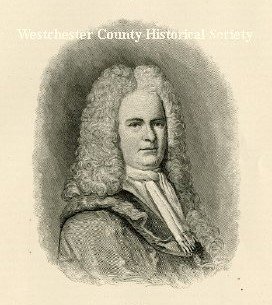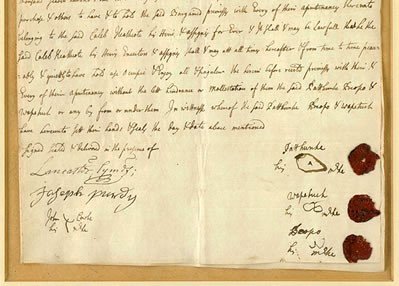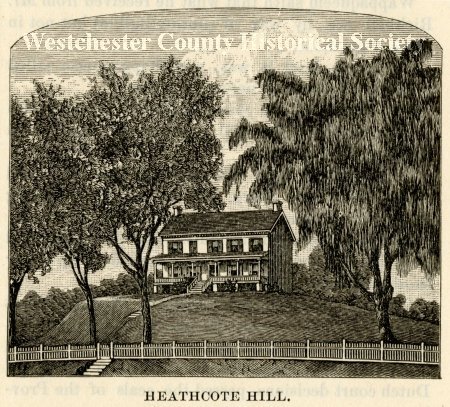Heathcote Manor
504 Cortlandt Ave, Mamaroneck
The House on Heathcote Hill

Caleb Heahcote (1665 - 1721) was one of the largest enslavers in Mamaroneck. A Loyalist from England, he held several positions appointed by the Royal government, including as a member of His Majesty’s Council. Heathcote moved from England to the United States to pursue a political career, eventually becoming the Mayor of New York City in 1711.
Caleb's home on Heathcote Hill – a Mamaroneck landmark – was destroyed before the Revolutionary War. Some theorize that Patriots burned it down, though this is not confirmed. It housed Caleb along with his wife Martha and their six children, providing a quiet refuge from his work in New York City. Though the house is gone, a historical plaque marks its original foundation site. The Women's Club now stands in its place.
The Purchase

Caleb Heathcote was very wealthy and was known for his acquisition of the Eastern Neck of Mamaroneck from Ann Richbell in 1697 – three years after the death of her husband, John Richbell. Heathcote’s purchase included Orienta (excluding James Mott’s property), the Richbell lot on Heathcote Hill, Scarsdale, and White Plains.
The 1712 Slave Rebellion

While still the mayor of New York in 1712, Heathcote was also a Quarter Session Judge. Because of this, he played a large role in the response to the 1712 Slave Rebellion, where an enslaver’s bakery was burned down by enslaved people. Of the enslaved people who revolted, 27 were captured. Six of them committed suicide, while the other 21 were executed. Records show that Heathcote was reimbursed by the state for the firewood he provided for those executions.
Though this wasn’t his only involvement in slavery. Being such a wealthy and prominent man, Heathcote was bound to have enslaved people of his own, despite not being listed on the census. A few sources suggest that his home on Heathcote Hill actually held quarters for enslaved people, though this isn’t proven.
